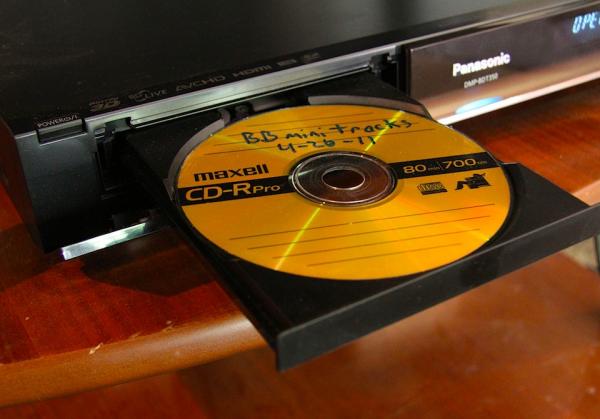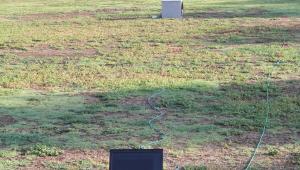Test Tracks: Your Most Important Audio Tool

If I were forced to choose between the $20K worth of audio test gear I own or the demo CD that cost me probably 20 cents to make, I’d take the latter without hesitation. Test gear is great for telling me how well an audio product is engineered. But when I want to find out what an audio product does — i.e., how a listener will perceive its sound — the demo CD is a much better tool.
With my demo CD, I can tell in a few minutes how accurate voices sound through a speaker, how natural a headphone’s tonal balance is, and how much output a subwoofer delivers at the deepest bass frequencies. And the more I use it, the more valuable it becomes.
That’s because the value of a demo CD lies not so much in which tunes you choose to put on it, but how many systems you’re played the demo CD through. When you’ve heard, say, Stewart Copeland’s high-pitched splash cymbal on The Police’s “Every Little Thing She Does Is Magic” through a few dozen systems, you’ll have a good idea of what that cymbal’s supposed to sound like. You’ll be able to determine if a headphone has a soft-sounding tonal balance, or if a speaker’s tweeter has an emphasized, edgy top octave.
Since I compiled my first demo CD back in 1994 or so, my choice of tunes has evolved as I’ve found more revealing material, or as my equipment testing needs have changed. I choose them not because they sound great, but because they quickly reveal the flaws in an audio system.
You don’t want your selection to evolve too much, though. Again, the choice of tunes isn’t as important as your familiarity with those tunes.
You can put together your own demo CD using practically any computer with a CD-R drive and any music management software. I’ve done it in iTunes and in Windows Media Player with similarly good results. The important thing is to rip the tunes in WAV or in a lossless format, so you get a bit-for-bit copy of what’s on the CD. You should also rip the tunes in, say, 256 kbps MP3, and put them on your smartphone or MP3 player so you have a portable test rig.
I even created a “mini” version of my demo CD by editing the tunes in Sony SoundForge to keep only the best parts. You can do this with the free Audacity editing software, too. With the mini demo CD, I can do a basic sound quality evaluation in about 6 minutes.
You might also want to add a few test tones, such as pink noise. My website has some you can download for free.
Just to give you an idea of the kinds of things you might want to put on your personal demo CD, here’s a list of some key tunes currently on my disc, and what I listen for in each tune. You can use these if you like, but it’s even better if you use tunes that you’ve already heard on lots of systems. If you have any favorite demo tunes of your own, let us know in the Comments section below.
Holly Cole, “Train Song” (from Temptation): This has been my #1 demo track since it was released in 1995. The deep bass notes that start the tune let me judge a product’s bass output as well as the quality (tight, loose, etc.) of the bass. I use the percussion to judge soundstage width. A super-high-pitched chime, struck right after Cole sings the line “…never, never, never ring a bell” lets me judge a tweeter’s high-frequency extension.
Bebel Gilberto, “Aganjú” (from Bebel Gilberto): Gilberto’s voice on this tune can sound edgy through some speakers. It shouldn’t. Also, once the tune gets going, two deep bass notes appear; some speakers and subs can’t reproduce the deepest one.
Ron Sexsmith, “Words We Never Use” (from Ron Sexsmith): Sexsmith’s voice is supposed to sound just a little coarse. Not smooth, not real coarse, just a little coarse. If it doesn’t sound like that, something’s wrong somewhere, possibly in the speaker’s crossover.
Steely Dan, “Aja” (from Aja): This is my reference when I want to hear what “regular music” sounds like through an audio product. It’s packed with hard-to-reproduce stuff: Fagen’s reedy voice, a perfectly plucked bass line, a piano that sounds hard and cheap through many speakers, lush background vocals, and a big-sounding tenor sax solo from Wayne Shorter. But mostly, I just listen for how the tune grooves.
Dennis and David Kamakahi, “Ulili’E” (from Ohana):
Dennis Kamakahi is the Johnny Hartman of Hawaii. His rich baritone and the detuned low strings of his slack-key guitar fall right into the frequencies where a subwoofer crossover usually operates; lots of systems make his voice sound bloated and the guitar sound boomy. Also, son David’s ukulele is a mellow-sounding, koa-bodied, nylon-string instrument, and if it sounds bright like a steel-string instrument, something’s amiss in your system.
World Saxophone Quartet, “The Holy Men” (from Metamorphosis): This recording features four saxophones, each one positioned at a certain point in the stereo soundstage. The very best systems give you a solid stereo image of each saxophone, and let you easily distinguish the four player’s tones and improvised melodic lines.
The Coryells, “Sentenza del Cuore – Allegro” (from The Coryells): Best recording I’ve found for gauging soundstage depth. Listen for the castanets in the background. On mediocre systems, they’ll sound like they’re a few feet behind the speakers. On great systems, they’ll sound like they’re 30 feet behind the speakers.
Trilok Gurtu, “Once I Wished a Tree Upside Down” (from Living Magic): The bell tree that percussionist Gurtu shakes in the intro provides the best test of a stereo system’s ambience that I’ve ever found. Listen to it though a pair of electrostatics (like MartinLogans) or planar magnetics (like Magnepans), and you’ll actually hear the bell tree circling around you.
Olive, “Falling” (from Extra Virgin): The melodic, deep, synth-bass line in this tune is tough for most speakers and many subwoofers to play at all. If your sub plays all the notes without distortion and is able to make all the pitches sound distinct, you’ve got a good one. To prevent ear strain, I created a custom test track with the treble rolled off (down -6 dB at 20 kHz), because the vocals are recorded way too bright on this one.
Saint-Saëns’ Symphony No. 3 “Organ Symphony” (from Boston Audio Society Test CD-1): This recording of an orchestra and a pipe organ has deep bass response down to 16 Hz. Only the largest, most serious subwoofers can reproduce the deepest tones.
Mötley Crüe, “Kickstart My Heart” (from Dr. Feelgood): This heavy metal classic is one of my most-used demo tracks. The bass and kick drum can sound dramatically different on different subs — punchy on the best subs, smeared or bloated on the worst ones. Also, the highly compressed mix provides such a consistently rich output, almost like high-level pink noise, that it’s great for judging distortion in inexpensive systems. When Vince Neil’s voice starts to sound strained or distorted, back off 1 dB and you’ve got a pretty good idea of the max output of the system.
- Log in or register to post comments




































































